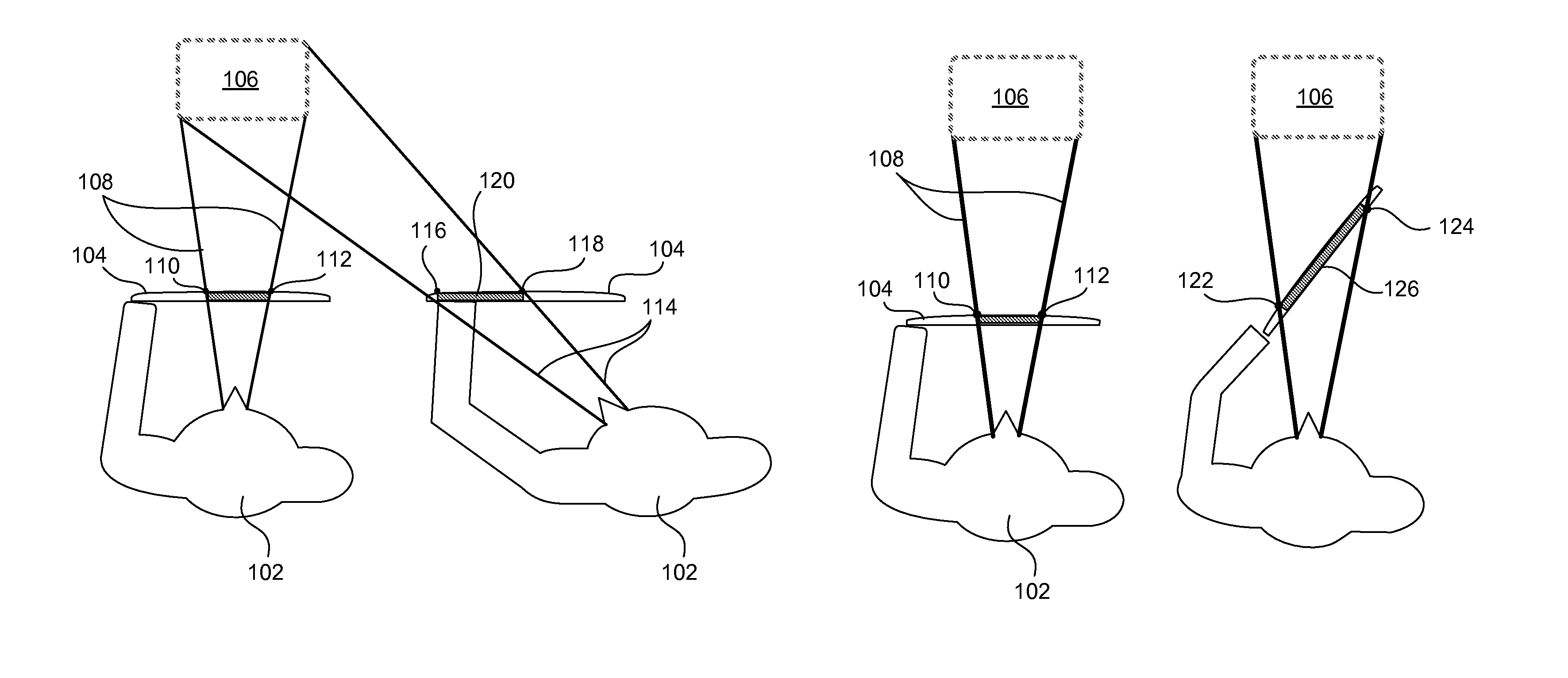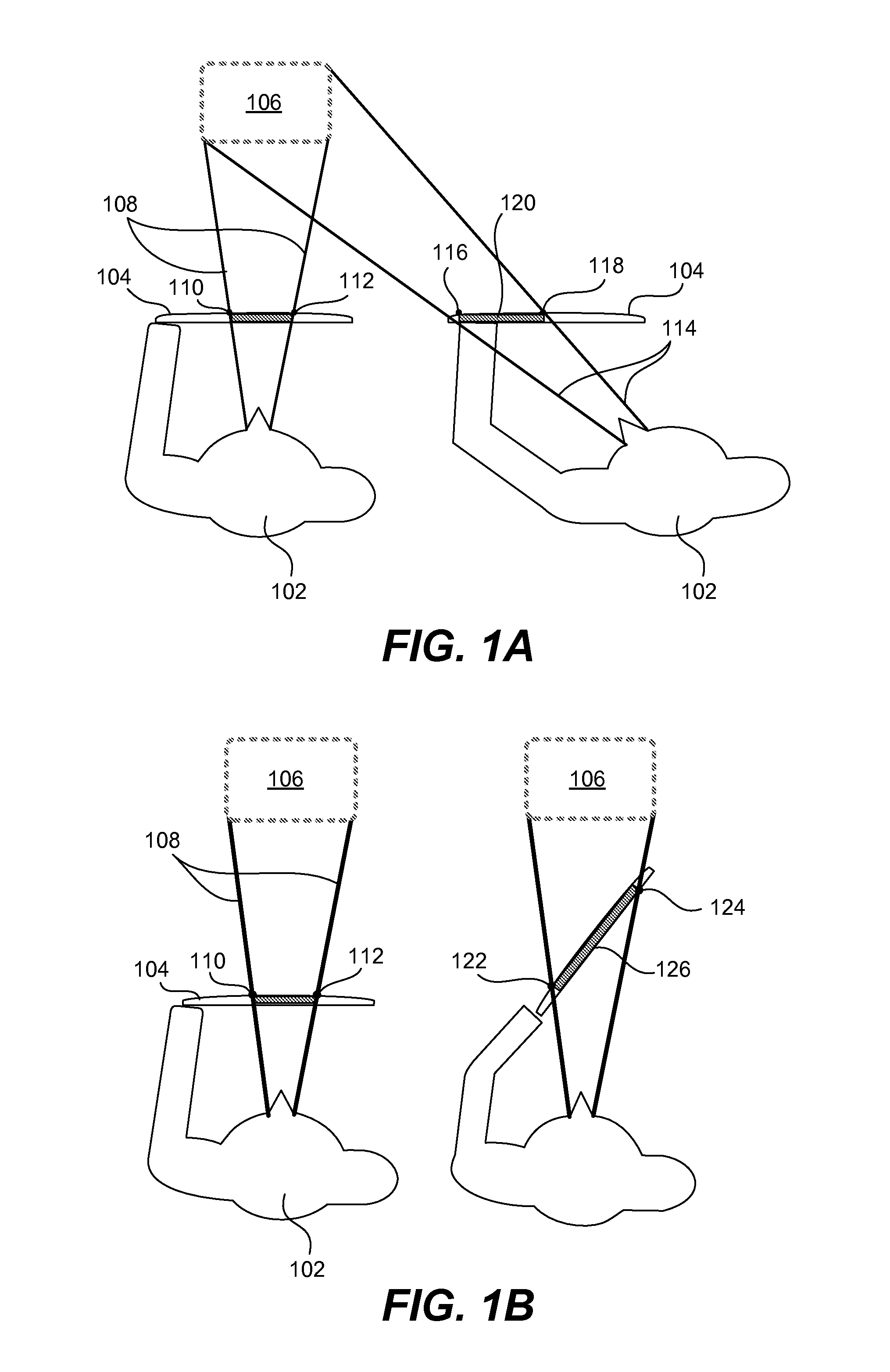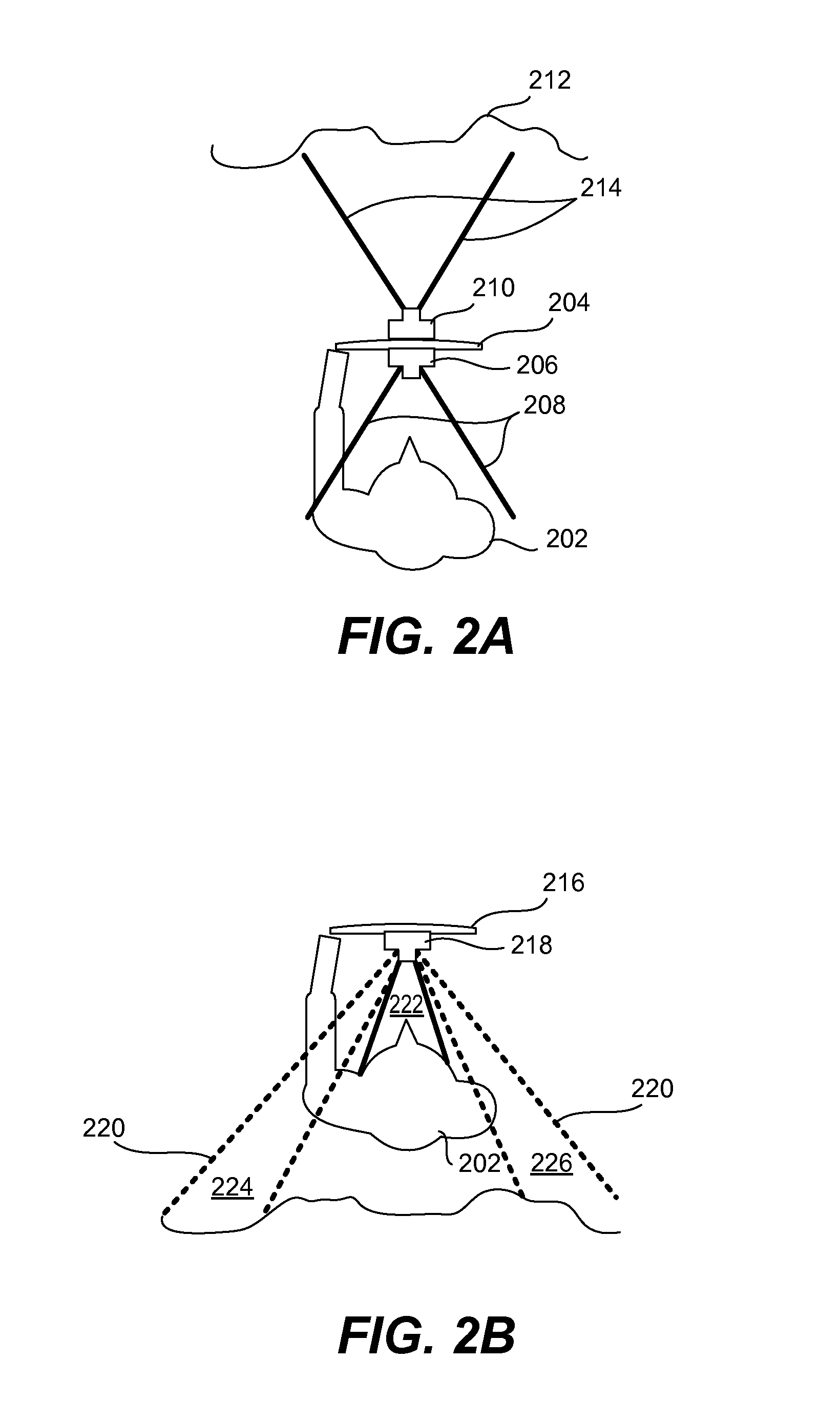Rendition of 3D content on a handheld device
a handheld device and 3d content technology, applied in the field of display of 3d content and mixed, can solve the problems of inability to adapt to enabling users to view and interact with 3d content in a realistic way, rendering of spatial content is not realistic or natural, etc., and achieve the effect of realistic visual interaction with the user
- Summary
- Abstract
- Description
- Claims
- Application Information
AI Technical Summary
Benefits of technology
Problems solved by technology
Method used
Image
Examples
Embodiment Construction
[0025]Methods and systems for rendering 3D content and images of physical objects and background scenery images on a handheld computing device are described in the various figures. View-dependent rendering (VDR) may be used for adjusting display of the content to when the user's head is moving relative to the display. Position-dependent rendering (PDR) may be used for adjusting the display of content to when the monitor or display is moving relative to the physical, real world environment. These two concepts are used concurrently or are combined to calculate rendering data for displaying 3D content on a display of a handheld device in a realistic and spatially correct way. That is, that the 3D objects, and any images of physical objects and background scenery (“physical objects”) either remain stationary or move as would be expected by a user when the user moves the device, moves relative to the device, or, as would be in most cases, does both. This concept is illustrated in FIGS. 1...
PUM
 Login to View More
Login to View More Abstract
Description
Claims
Application Information
 Login to View More
Login to View More - R&D
- Intellectual Property
- Life Sciences
- Materials
- Tech Scout
- Unparalleled Data Quality
- Higher Quality Content
- 60% Fewer Hallucinations
Browse by: Latest US Patents, China's latest patents, Technical Efficacy Thesaurus, Application Domain, Technology Topic, Popular Technical Reports.
© 2025 PatSnap. All rights reserved.Legal|Privacy policy|Modern Slavery Act Transparency Statement|Sitemap|About US| Contact US: help@patsnap.com



